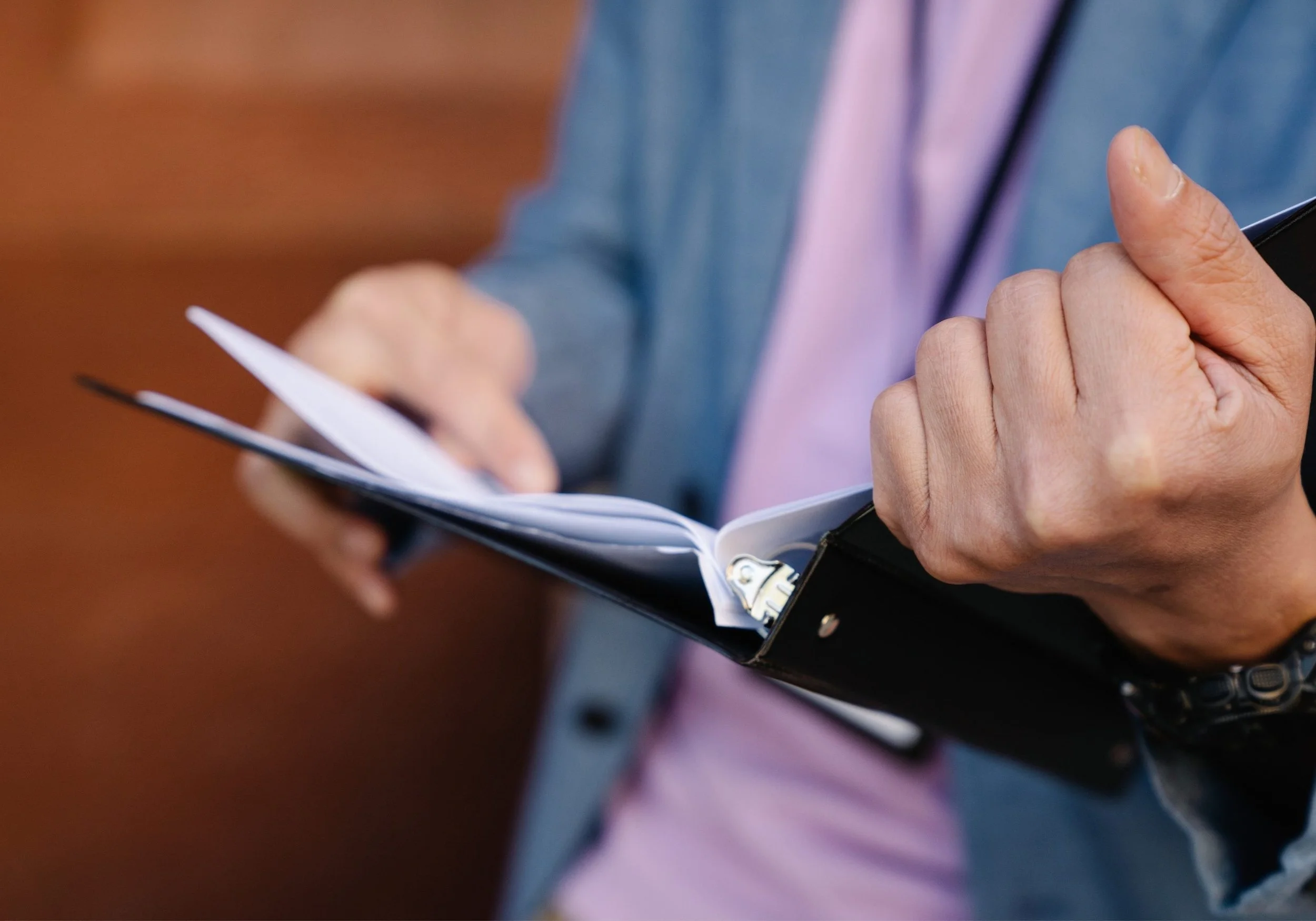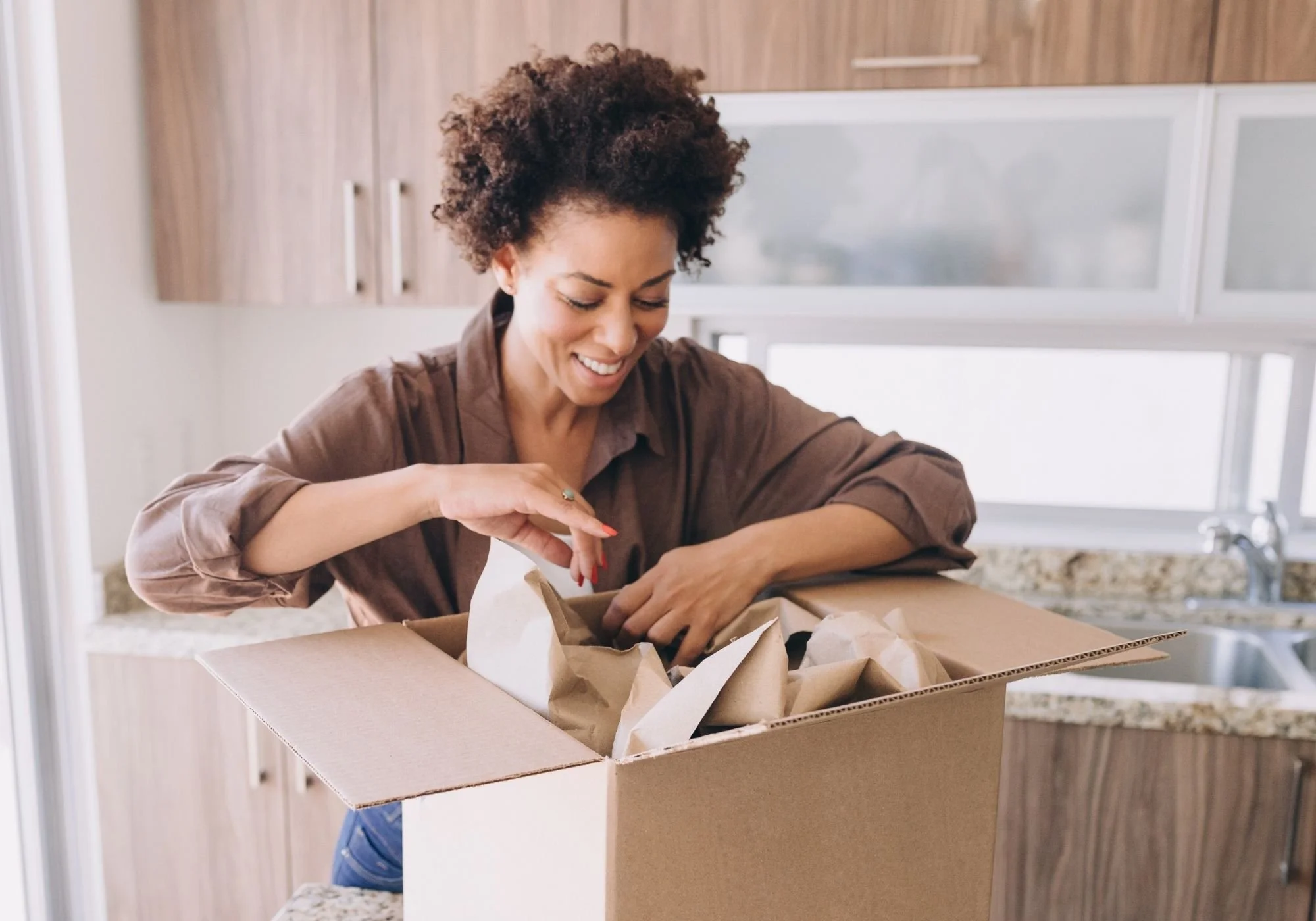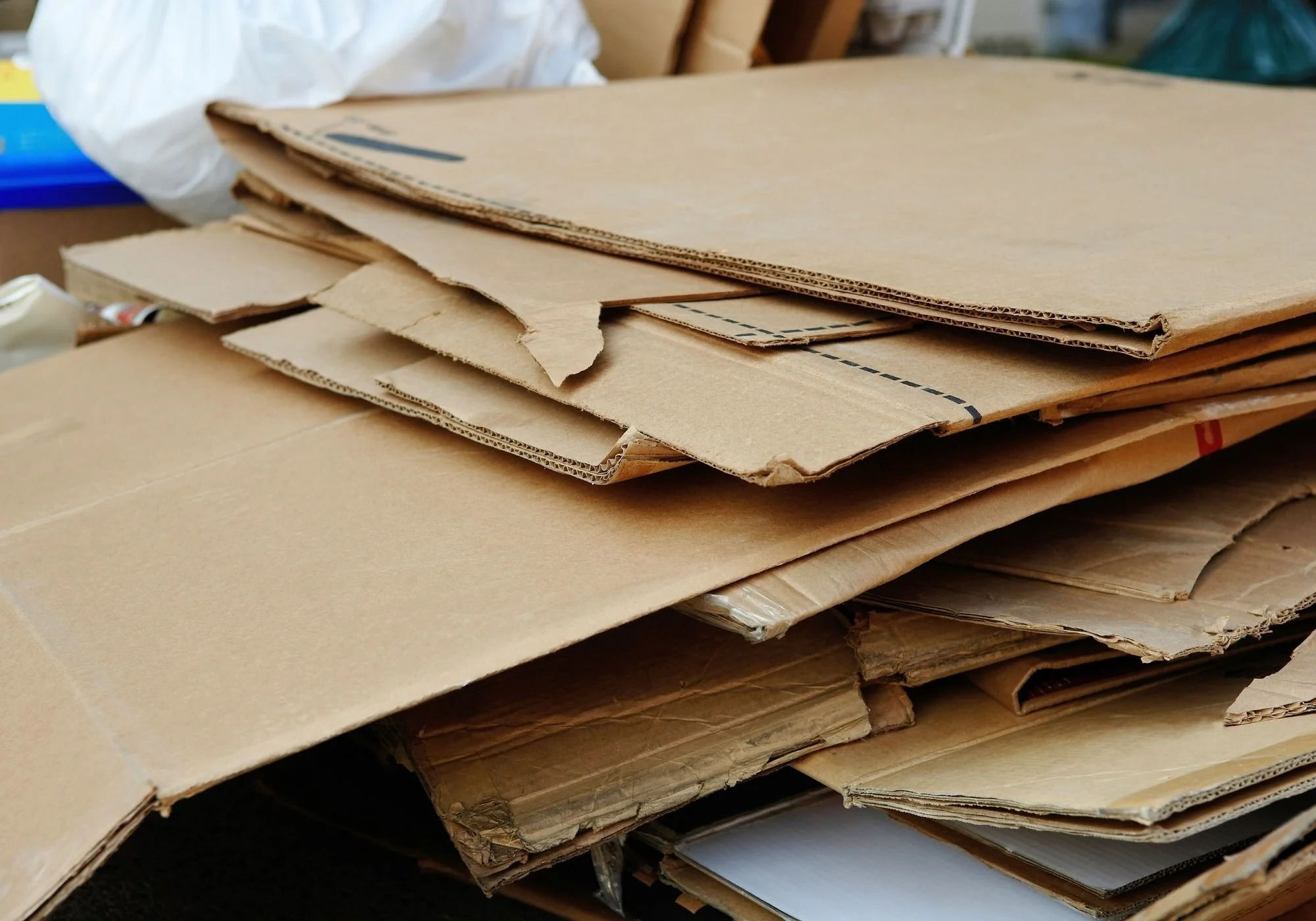The Ultimate Moving Checklist
What to Do Before, During, and After Your Move
Moving is exciting, but it can also be overwhelming. As the owner of a Houston-based moving company with decades of experience helping families and businesses relocate across Texas and the U.S., I’ve seen just about every kind of move you can imagine. One thing I know for sure? Having a solid, step-by-step plan makes all the difference.
That’s why we’ve put together The Ultimate Moving Checklist—your go-to guide for what to do before, during, and after moving day. Whether you’re moving around the corner in Houston or heading across the country, this guide will help you stay organized, stress less, and make your move a smooth success.
______________________________
Before the Move: 4–6 Weeks Out
Create a Moving Binder
Keep all estimates, receipts, and records in one place. Think of your moving binder as your relocation command center. Use it to store:
Moving company estimates and contracts
Inventory checklists
Receipts from packing materials, utility deposits, and more
A floor plan of your new home (so you can plan furniture placement)
Contact info for realtors, utility providers, and school offices
A physical binder works great, but if you’re more digital, use a cloud storage folder or a project management app like Notion or Trello to keep everything accessible.
Book Your Movers
If you're in or around Houston, now’s the time to lock in your spot with a trusted, licensed moving company (like ours!).
Reputable movers book up quickly (especially in peak seasons like summer).
If you’re in Houston or the surrounding area, now’s the perfect time to secure your spot with a licensed, bonded, and insured mover (like A Better Tripp).
Be wary of too-good-to-be-true quotes from movers who don’t offer in-home estimates—these can lead to costly surprises on moving day.
Ask about services like packing, storage, specialty item moving, or backhaul availability for small loads to save money.
Start Sorting and Donating
Decluttering now saves time, energy, and money (you don’t want to pay to move things you don’t use!).
Go room by room and create four categories: Keep, Donate, Sell, and Toss.
Donate usable items to local Houston charities like Boys & Girls Country, Goodwill, or the Houston Furniture Bank.
Host a garage sale or list items on Facebook Marketplace or OfferUp.
Properly dispose of hazardous items that movers can’t transport—like paint, propane tanks, or old cleaning supplies.
Order Packing Supplies
Don't underestimate how much you'll need. Stock up on:
Sturdy boxes in various sizes
Packing tape and dispensers
Bubble wrap and packing paper for breakables
Zip-top bags for screws and small hardware
Permanent markers for labeling
Specialty boxes like wardrobe, TV, and dish boxes
Pro tip: Most moving companies (including ours!) can supply all the materials for you—ask about full-service packing options.
Notify Schools & Medical Providers
If you're moving with kids or have ongoing medical needs, this step is essential.
Contact current and future schools to arrange transfer of academic records, test scores, and immunization history.
Schedule a visit to your child’s future school, if possible, to ease the transition.
Request medical and dental records for every family member and ask for referrals in your new location.
Make sure to fill or transfer any necessary prescriptions before the move, especially if you're moving long distance.
______________________________
2–3 Weeks Before Moving Day
Begin Packing Non-Essentials
Now’s the time to start boxing up anything you don’t use on a daily basis. This makes the final weeks before your move much less stressful. Focus on:
Off-season clothing and shoes
Holiday décor or seasonal items like pool toys, winter coats, or space heaters
Books, DVDs, and extra décor
Spare linens and towels
Rarely used kitchenware (think baking pans, china, fondue sets)
Garage items or tools that won’t be needed before moving day
Pack by category or by room—whichever helps you stay organized—and clearly mark the boxes so you can find things again if needed.
Label Everything
A clear labeling system will save your sanity on move-in day. Here’s how to do it right:
Room name on every box: “Kitchen,” “Master Bedroom,” “Office,” etc.
Quick contents list: “Mugs + Blender,” “Towels + Sheets,” or “Kids' Legos + Books”
Consider color-coding with colored duct tape or stickers (blue = bedroom, red = kitchen, etc.)
Mark fragile items clearly and indicate which side should face up
Number your boxes and keep a separate inventory list if you’re extra detail-oriented
This step makes unpacking faster and also helps the movers place boxes in the correct rooms right away.
Change Your Address
Start forwarding your mail and updating accounts to avoid missing important documents or deliveries.
Visit USPS and submit a change of address—it only takes a few minutes
Notify your bank, credit card companies, insurance providers, and loan servicers
Update your driver’s license and vehicle registration if moving out of state
Don’t forget streaming services, subscriptions (like Amazon), and online shopping accounts
Let your friends and family know your new address too
Tip: Set reminders to double-check mail forwarding a week after the move to ensure everything is working.
Schedule Utilities
Nothing's worse than arriving at your new place with no electricity, water, or Wi-Fi.
Contact utility providers in your current home to schedule service disconnection
Set up new services for your future home, including:
Electricity
Water & Sewer
Gas
Internet & Cable
Trash/Recycling pickup
Home security, if applicable
Aim to have services active 1–2 days before your move-in date, so your arrival is seamless
Take photos of your utility meters before you leave your current property for accurate final billing
Arrange Time Off
Whether you’re moving across town or across the country, the process takes time and focus.
Request time off from work now so you don’t run into scheduling issues later
If you’re juggling work and moving, consider taking a day off before the move to finish packing and a day or two after for unpacking and settling in
If you’re moving with kids, check school calendars to coordinate any necessary absences or early dismissals
This is also a good time to coordinate with family or friends who might be helping you—give them a heads-up so everyone’s on the same page.
______________________________
Moving Week
Pack an Essentials Box
This is your open-first box—the survival kit you’ll need right away without digging through stacks of boxes. Think of it as your personal carry-on for the move. Include:
Toiletries (toothbrush, toothpaste, soap, deodorant, toilet paper)
Phone chargers + power strip
Medications
Pajamas and a change of clothes
Snacks, water bottles, and easy meals
Coffee/tea and a travel mug
Towels and basic cleaning supplies
Important documents (leases, IDs, moving contracts, keys)
Pro Tip: Each family member can pack their own essentials bag to keep things simple.
Disassemble Furniture
Don’t wait until moving day to start breaking down beds and unscrewing table legs. This task can take longer than expected, so do it in advance.
Take apart beds, shelves, dining tables, modular sofas, and workout equipment
Keep hardware in labeled ziplock bags taped to the corresponding furniture
Use your phone to take photos of anything complicated—especially wiring or assembly setups
Bundle loose parts or cords together and label everything clearly
NOTE: If A Better Tripp is handling disassembly, prep the space so our movers can work efficiently when they arrive.
Confirm Details with Your Movers
This is your final check-in to make sure moving day runs like clockwork.
Confirm the date and time of arrival
Re-verify pickup and drop-off addresses
Clarify parking instructions, gate codes, or elevator reservations
Mention any fragile, high-value, or unusual items (like pianos or fine art)
Share your emergency contact info and best way to reach you throughout the day
Ask who your main point of contact will be on moving day
Clear communication now = less confusion later.
Clean the Old Place
Whether it’s required for a security deposit or just good manners, leaving your old space clean is key.
Vacuum and mop floors
Wipe down baseboards, counters, and appliances
Scrub the bathrooms and sinks
Take out the trash and recycling
Patch up any small nail holes or scuffs on the walls
If you're short on time or energy, hire a professional cleaning crew—worth every penny
Landlords and new homeowners alike will appreciate the effort.
Take Photos
Photos aren’t just for memories—they’re also your insurance.
Snap pics of each room after it’s empty to document the condition you’re leaving it in
Photograph valuable or fragile items before packing or loading
Take pictures of meter readings for utilities (gas, water, electric)
When you arrive at your new place, take photos of existing damage before your furniture goes in—this is especially important in rentals
Store all images in a labeled album on your phone or cloud drive, just in case you need proof for security deposit disputes or insurance claims
______________________________
Moving Day
Meet the Movers Early
Be ready before the truck pulls up.
Greet the crew and walk them through your home—show them what's staying, what's going, and point out items that need extra care.
Highlight anything fragile, oversized, or unusual (like heirloom furniture, electronics, or artwork).
Let them know if there are stairs, tight hallways, or time-sensitive tasks—they’ll appreciate the heads up, and you’ll save time later.
Pro tip: A little coffee or bottled water for your moving crew goes a long way to build goodwill and keep things running smoothly.
Do a Final Walkthrough
Before closing the door for the last time: check everywhere.
Open closets, cabinets, drawers, and behind doors. Don’t forget storage spaces like the attic, garage, or under the bed.
Double-check that utilities are off, and that keys or garage openers are accounted for.
If you’re renting, take pictures to document the condition for your deposit return.
Moving is hectic—give yourself a quiet moment to walk through and say goodbye, too. Closure is part of the process.
Keep Valuables with You
Certain things are just too important to load onto a truck.
Always carry important documents (ID, passports, leases, insurance papers), cash or checkbooks, jewelry, laptops, and medications with you.
Use a personal essentials bag—backpack or tote—for your “can’t-lose” items.
It’s not about mistrust—it’s about convenience and peace of mind.
You don’t want to be rifling through a mountain of boxes looking for your phone charger or your child’s favorite toy on night one.
Stay Hydrated & Take Breaks
You’re not a robot. Moving is physically and emotionally demanding.
Have water bottles on hand, and don’t skip meals or snacks.
Dress comfortably, and wear shoes with good support—you’ll be on your feet all day.
Schedule short breaks to breathe and regroup. Even 5 minutes can make a difference in energy and attitude.
Moving days can stretch long. Keeping your body fueled and your mind sharp helps avoid accidents and frustration.
______________________________
After the Move
Unpack Essentials First
No need to open every box on day one. Start with what makes life functional and comfortable.
Kitchen basics: Set up a few pots and pans, plates, cutlery, and coffee supplies so you’re not ordering takeout every night.
Bedrooms: Make the beds, unpack pillows, sheets, pajamas, and clothes for the week.
Bathrooms: Set up toiletries, towels, and toilet paper right away.
Pro Tip: Prioritize rooms you use daily so you can quickly get into a rhythm—even if other boxes take a while.
Test Utilities & Internet
Make sure all the essentials are working properly.
Flip light switches, test outlets, and check your thermostat.
Run the water, test hot and cold, and check for any leaks.
Flush toilets, and make sure appliances (oven, fridge, dishwasher) are running.
Connect to your Wi-Fi, and test signal strength in various rooms.
If anything’s not working, you’ll want to report it sooner rather than later.
Recycle Boxes
Once you've emptied some boxes, don’t let them pile up in corners.
Break them down as you go and stack them neatly.
Recycle through your local waste service, or post them on neighborhood apps (Nextdoor, Facebook Marketplace) for free pickup.
Many local moving companies or community centers are happy to take gently used boxes—so you’re helping someone else, too.
Bonus: less clutter means you’ll feel more settled.
Update Your Driver’s License
If you're in Texas, you’re legally required to update your address within 30 days of moving.
Visit your local Department of Public Safety (DPS) office or go online to update it.
You'll need documents like proof of residency (a utility bill or lease), your current license, and maybe your Social Security number.
While you're at it, update your vehicle registration and insurance info, too.
Get to Know Your Neighborhood
Now for the fun part—start making this new place feel like home.
Introduce yourself to your neighbors. It’s a great way to build connections and get local tips.
Explore nearby shops, parks, and coffee spots—find your new favorites.
Look up local Facebook groups or community events to stay in the loop.
Take a walk or drive around to learn the lay of the land and find the nearest grocery store, pharmacy, and gas station.
Don’t forget to celebrate! Moving is a huge accomplishment! Take time to relax and enjoy your new space.
______________________________
Ready to Start Your Move?
Moving doesn’t have to be chaotic. With the right team, a solid checklist, and a little prep, your move can actually be a fresh, exciting start. If you're planning a move in Houston or anywhere across Texas or the U.S., A Better Tripp Moving & Storage is here to help every step of the way.
Want a stress-free move from professionals who care?
Get a FREE quote today or relocation tips tailored to your needs!
CALL (713) 266-8348 or complete the FORM below to get your custom moving quote today.
Let’s make your next move A Better Tripp!











